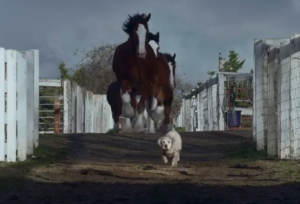One Brand Family, Two Brands, How Many Brand Messages?
As we all know, advertising during the Super Bowl is the biggest decision for a brand’s marketing strategy of the year. It regularly ranks among the most-watched television events in history (this year’s edition actually broke the record for most TV viewers for any program ever), and as such the money and spotlight on the commercials has grown just as big.
Audiences wait all year to see what ideas the participating brands come up with, and these choices are discussed, analyzed and critiqued almost as much as the game.
The pressure is enough for just those who were marketing just one brand at the game. For some, it was doubled, as they had two separate brands, which lived under the same brand umbrella, with advertisements running during this time.
The trick for brand managers in this situation is to decide whether to combine the two brands to support one brand message, or to establish dual messages and ensure that both are well-received and successful in their goals.
Popular opinion seems to fall on the side of dual messaging, in order to provide clarity from a larger brand strategy and brand equity standpoint. A well-defined branding message is some of the most valuable currency for advertisers and marketers, and brand-specific messaging is a shortcut to success in the area.
For instance, the Super Bowl commercials for Budweiser and Bud Light struck almost polar opposite messages from each other. These are two products that share numerous similarities, but when it comes to their brand strategies, they havechosen to take paths that best represent who they are and who they want to become.
Budweiser’s Clydesdales made their annual appearance, and helped to tell a heartwarming story of redemption and coming home with a puppy and his owner. On the other hand, Bug Light continued its “Up for Anything” campaign featuring a group of young partygoers and a life-sized Pac-Man game.
These two spots could not have hit on more different levels emotionally, which was the goal. A consumer will rarely confuse who each brand is, and who their ads were targeting.
One factor that plays into the target of the ad is the audience for the brand. In the Budweiser/Bud Light example, they are targeting different audiences, and therefore the brand strategy  and messaging reflects this.
and messaging reflects this.
It is a foundational aspect of branding – decide who you are, decide who you are speaking to, and adjust accordingly. For Bud Light to attempt and copy Budweiser’s Super Bowl commercial messaging of relationships, emotional connections and loyalty would completely change how the brand is viewed and would have the potential to do more harm than good.
When a consumer decides what a brand’s image is, changing can be a risky endeavor. For two brands that fall in the same family, both should have already carved out their niche and decided who would live where in the brand space. Crossing over would be seen as unauthentic and an attempt to grab an audience with whom the brand has no equity.
When faced with (possibly enviable) problem of having a pair of brands to showcase on branding’s biggest night, band managers and strategists can’t get can’t and forget the brand’s long-term future and direction. Having brand-specific messaging can build to a larger strategy, which will give more weight to the ads themselves, and provide a bigger bang for your buck.
Image Sources: